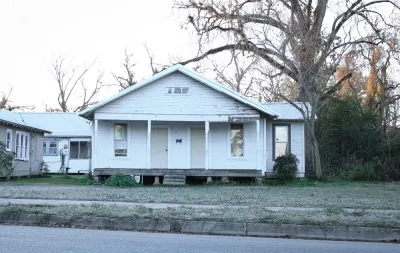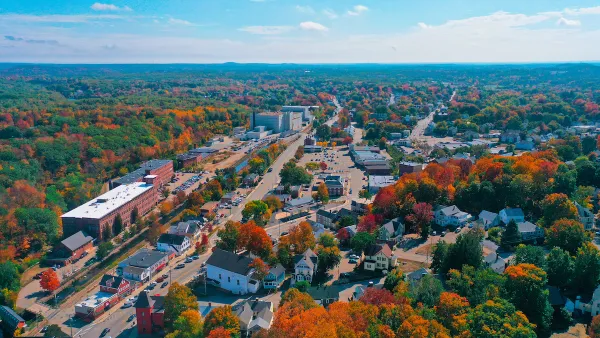While housing shortages in major cities are grabbing headlines, rural communities are seeing higher rates of growth in housing prices and a silently spreading homelessness crisis.

The term ‘housing crisis’ brings to mind cramped urban apartments and tenants clamoring to sign a lease on an exorbitantly expensive piece of city living, or makeshift encampments sheltering unhoused people under a freeway overpass. But, according to an article in The Daily Yonder by Taylor Sisk and Jan Pytalski, a quieter, more insidious crisis is growing in America’s rural regions, where rising housing costs, changing demographics, and stagnant incomes are pushing many families into homelessness.
Exacerbated by the pandemic, when professionals suddenly free from the confines of the physical office sought affordable homeownership, open space, and a small-town feel away from large city centers and suburbs, rural America’s housing shortage is putting a growing strain on longtime residents and newcomers alike.
Rural homelessness, says Adrienne Bush, director of the Homeless & Housing Coalition of Kentucky, is often less conspicuous than its urban counterpart. “It expresses itself through housing insecurity, folks doubled up with friends or family, people couch surfing because they don’t have a place of their own,” Bush explains.
But the crisis is growing fast: “Nationwide, homelessness rose less than a half percent from 2020 to 2022 but almost 6% in rural communities.” Meanwhile, a dearth of large-scale development in rural areas means the cost of construction is higher, making development less profitable.
The article describes efforts in some rural towns to stem the crisis and provide housing and shelter for residents, such as the Gary Leif Navigation Center in Roseburg, Oregon, a shelter that provides a variety of services for unhoused residents. In Kentucky’s Perry County, Kentucky River Community Care provides mental health services and housing opportunities. Activists in rural communities express optimism that the problem, which is often acute but on a much smaller scale than in larger cities, is largely solvable if given enough resources. However, the uncertainty of the post-pandemic housing and labor market leaves the future of rural housing unclear.
FULL STORY: Tackling Rural America’s ‘Hidden’ Housing Crisis

National Parks Layoffs Will Cause Communities to Lose Billions
Thousands of essential park workers were laid off this week, just before the busy spring break season.

Retro-silient?: America’s First “Eco-burb,” The Woodlands Turns 50
A master-planned community north of Houston offers lessons on green infrastructure and resilient design, but falls short of its founder’s lofty affordability and walkability goals.

Delivering for America Plan Will Downgrade Mail Service in at Least 49.5 Percent of Zip Codes
Republican and Democrat lawmakers criticize the plan for its disproportionate negative impact on rural communities.

Test News Post 1
This is a summary

Test News Headline 46
Test for the image on the front page.

Balancing Bombs and Butterflies: How the National Guard Protects a Rare Species
The National Guard at Fort Indiantown Gap uses GIS technology and land management strategies to balance military training with conservation efforts, ensuring the survival of the rare eastern regal fritillary butterfly.
Urban Design for Planners 1: Software Tools
This six-course series explores essential urban design concepts using open source software and equips planners with the tools they need to participate fully in the urban design process.
Planning for Universal Design
Learn the tools for implementing Universal Design in planning regulations.
EMC Planning Group, Inc.
Planetizen
Planetizen
Mpact (formerly Rail~Volution)
Great Falls Development Authority, Inc.
HUDs Office of Policy Development and Research
NYU Wagner Graduate School of Public Service





























